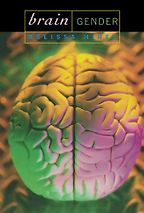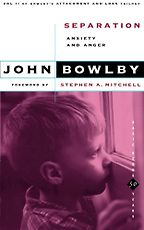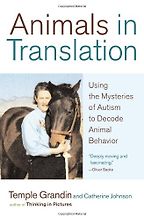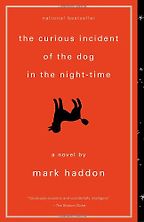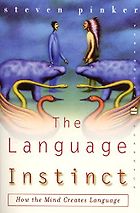You are well known for your research into autism. Recently you have been exploring the concept of empathy. Can you explain how the two are linked?
The link between empathy and autism derives from the idea that difficulty with empathy is the main characteristic in autism. It is because people with autism struggle with empathy that they have trouble forming social relationships and interacting in the social world. The focus on empathy in my book is not a real departure from the research I have been doing into autism, which goes back several decades. But what I do in this new book is widen the focus. Autism isn’t the only psychiatric condition where empathy is an area of difficulty. I have included a range of these conditions, including various personality disorders, to understand how empathy can go wrong either in terms of its development or its functioning.
So you look at how empathy can be the source of many problems in different medical conditions and how we can help people in that situation?
Yes, and I also examine the relationship between low empathy and acts of cruelty. Part of the puzzle I address is how is it possible that human beings are capable of acting in cruel ways to each other? I think that whenever people act in cruel ways their empathy has been switched off or has gone down in some way. That can happen for all kinds of reasons. In a care home, for instance, if the care staff are being abusive either verbally or physically towards the people they are meant to be caring for, my argument is that it must have been because of a lack of empathy.
Let’s move on to your first choice, Steven Pinker’s The Language Instinct, which looks at how children learn language.
I chose this book because I thought it was a model example of a scientist taking quite a complicated area of science – the nature of language – and communicating it to a wider public in a very accessible way. He looks at it from every angle. He puts language on the table, as it were, and looks at it from the perspective of not just linguistics, but neuroscience as well – that is, how the brain is capable of generating language or understanding it. He also looks at evolution, whether human beings are the only species that have language, and how a language development can go wrong in different people.
How does that tie in with empathy, because I would have thought that language is a very important tool in empathising with people?
Yes, there is a strong link between language and empathy, but I think you can have empathy without language. The clearest example of that can be seen if you look at typically developing children, even before they have got language. Towards the end of the first year of life they are very actively looking at people’s faces and emotional expressions and they are modifying their behaviour based on how they see other people are reacting. They interpret other people’s faces. All of that is happening before a child even has words.
This is a problem with some people who are autistic because they can’t read people’s facial expressions.
Yes, one of the earliest signs of autism is just at that same time, between 12 and 24 months old. They are not looking at faces as much, and even if they are they are not reacting to people’s emotional expressions in the usual way. And that may be even if language is developing. These give us clues that language and empathy are independent. But you are absolutely right that once we have language it can facilitate the development of empathy because once you can understand what people are saying, their words can also be used as evidence of what they are thinking and feeling. It gives you a second source of information and helps you put yourself in their shoes and imagine what is going on in their mind. So you can imagine, in a typical child, that empathy really takes off in the early years, not just because of the empathy circuit in the brain developing, but also because language is facilitating it.
Your next book, Brain Gender by Melissa Hines, takes a look at what factors influence our brain.
I have had a long-standing admiration for Melissa Hines’s research. She has been looking at the controversial topic of human sex differences over many decades. This book brings together not just her own research, but also her integration of the field. It is looking at a very fundamental question – is there a difference between males and females when it comes to the mind and ultimately the brain?
And she thinks there is, but to differing degrees.
Yes, and she is a very moderate scientist because she is the first to recognise that many of these differences could just be the result of the way our society is organised and the different social experiences that boys and girls have as they grow up. So she is not an extreme biological determinist. On the other hand, she does recognise that biology does play a role. Her best evidence for that is a group of children that she has been studying that have a medical condition called Congenital Adrenal Hyperplasia. These are girls who produce too much testosterone for reasons of genetic mutation. She looks at their behaviour and finds that many of these girls show “tomboy” behaviour. She finds that they seem to be more interested in male typical interests, in terms of their choice of activities when they play as children. And increasingly it is possible to use MRI [magnetic resonance imaging] to look at their brains. She shows some evidence that our prenatal biology, particularly the hormone testosterone, also influences our patterns of behaviour and how the brain develops.
Does she think that has some bearing on how you empathise with people? One of your books looked at the idea that autism was almost like an extension of having extreme male characteristics.
In recent years she has moved to Cambridge, so we get a chance to meet in Cambridge and talk about these issues. I think although empathy wasn’t the focus of her work, she is certainly very interested in the idea that empathy is another area in which the sexes differ. And I agree. One of my books, The Essential Difference, overlaps with her book. And you are right, in that book I was looking at the idea that autism might be an extreme of the typical male profile. In males there is often a slower development of empathy relative to females, and children with autism lag behind even more.
Your next choice, John Bowlby’s 1976 book Separation, is all about what ties a child to their mother.
I picked this book because I think it was revolutionary. Today, with hindsight, it looks like the book is telling us something very obvious – that how we treat our children in the early years makes a difference to how they grow up. But this is not something that was always recognised. John Bowlby was a paediatrician working in London, and he looked at the concept of what he called attachment. What he meant by that was the child’s relationship to their caregiver in the first few years of life. He argued that if children have insecure attachments they can develop all kinds of difficulties by the teenage years, particularly in forming relationships, trusting other people and empathising with them. He looked at children who were developing delinquency, for example, and traced it back to the fact that many of these children had been in institutional care or foster homes, and hadn’t had the benefit of being able to form secure attachments to a caregiver. Although these days it is seen as a truism that we need to treat our children carefully and affectionately, I think it needed to be demonstrated scientifically. And it has had far reaching implications and consequences for how we organise society.
Five Books interviews are expensive to produce. If you're enjoying this interview, please support us by donating a small amount.
I know that in nurseries children now have key helpers that focus on them, rather than an array of teachers.
Yes, the idea is that children need a small number of caregivers. In Bowlby’s day it wasn’t uncommon for children in care to have multiple, changing caregivers. So there wasn’t much stability.
You talk in your book about the internal pot of gold in relation to John Bowlby – what does that mean?
When a child does have the opportunity to form a secure relationship effectively, what they are getting from their parent figure is what I call an internal pot of gold. It is the inner resource that they can carry with them throughout their lives, which will help them to cope with challenges.
And which shows them the way that a good and loving relationship should be.
Yes, because that was the other side of Bowlby’s concept. He was also working in a psychoanalytic framework, using the idea that the first relationship influences later relationships.
As a mother, that is a lot of responsibility to be told something like that.
You are right and this book met with controversy, because it carries the implication of blaming parents when children end up with difficult behaviour. I don’t think we need to go down the road of parent blaming. There are lots of reasons why attachments may not become secure. In my book I look at people with borderline personality disorders. These are adults who have extreme mood swings in relationships, including extreme anger, and some 80% of them suffered child abuse. This underlines Bowlby’s point that insecure attachment in childhood can have far reaching consequences.
Your next book sounds interesting. In Animals in Translation, Temple Grandin likens animals to autistic people because of the similar way in which they look at the world.
I think this book is unusual for lots of reasons. I found it really gripping. First of all, it is written by someone with autism. For me, as a scientist who has been looking at autism from the outside, I felt there is so much we can learn from her because she has actually got the condition, and is able to tell us what the world looks like from her point of view.
And it is often a much more visual view of the world.
Yes. She is a professor in the US who has had her diagnosis of autism since childhood. Her previous book actually emphasised the visual aspect. She called it Thinking in Pictures. The idea is that whereas most of us think in words, many people with autism think in images – as if they have a series of snapshots in their minds. In the book that I have picked, Animals in Translation, she has also highlighted the way that people with autism are hypersensitive to the sensory world. They may notice things that other people miss and they may react to sensory stimuli in much more extreme ways. It could be sounds, it could be visual.
And touch.
In fact she found that certain kinds of touch are really difficult for people with autism, such as human touch. But she designed a machine that she calls the squeeze machine, which you can climb into and it presses you, and you can adjust how much pressure you have from it, which she finds very soothing. When the touch and pressure is under the person’s control she finds that is as nice as a hug.
So this book helps us empathise with people like Temple because it leads to a greater understanding of their world.
Yes, and the other dimension to this book is that as a person with autism she is a very acute observer. She uses that skill to observe other animals, and draws the comparison between how people with autism react to different sensations and how animals do as well. She has used that very productively in her own career. She designs equipment for the agriculture industry, for example.
Your final book is a novel that is also written from the perspective of someone with autism. The Curious Incident of the Dog in the Night-Time by Mark Haddon.
This is a piece of fiction, unlike the other books, but it still links into the theme we have been talking about. The central character is a 12-year-old with Asperger syndrome, which is a form of autism. It may not be completely realistic but I think fiction can be allowed to exaggerate in a way that science can’t. It describes a child who is very gifted at mathematics, who is taking A-levels at 12 years old, yet he is completely perplexed by even ordinary human actions which are going on all around him. His excellent logic allows him to try to act as a detective in his community, and he tries to figure out how events came to happen. Again, it is looking at the world through someone else’s eyes and seeing how things that we take for granted – like being able to get on a bus or go on a London tube [train] – might be a terrifying experience for other people.
Get the weekly Five Books newsletter
How do you think we in society can help ourselves and each other empathise more, and why do you think it is important?
Towards the end of my book I consider the potential implications in science from what I have learnt about empathy, to broaden it out towards what this means for society. I don’t want it to be preaching, but I do feel that empathy has been relatively neglected. We have talked a little bit about it already, in terms of how it can be brought into the classroom and pre-school. I think there are very few areas in society that wouldn’t benefit from a greater focus on empathy. We can do with more of it in our hospitals, our care homes, and probably even in our political system – being able to not just argue for our position and from our own perspective, but trying to set that aside to imagine what the other person is thinking, or why they are arguing from a different perspective.
Interview by Cal Flyn, Deputy Editor
July 15, 2011
Five Books aims to keep its book recommendations and interviews up to date. If you are the interviewee and would like to update your choice of books (or even just what you say about them) please email us at [email protected]

